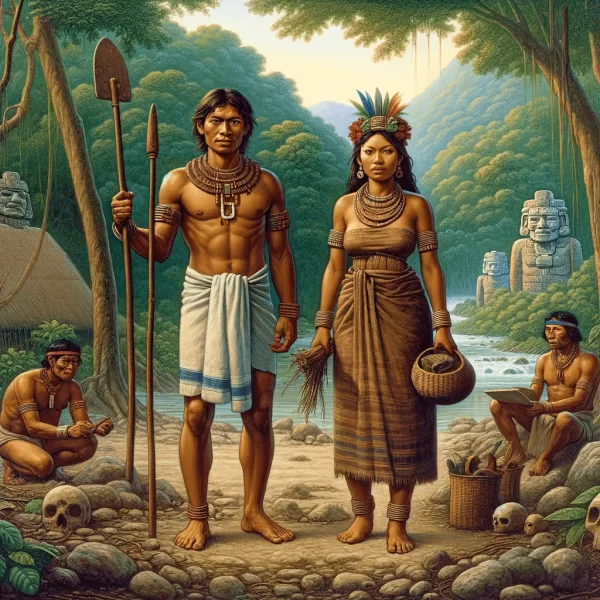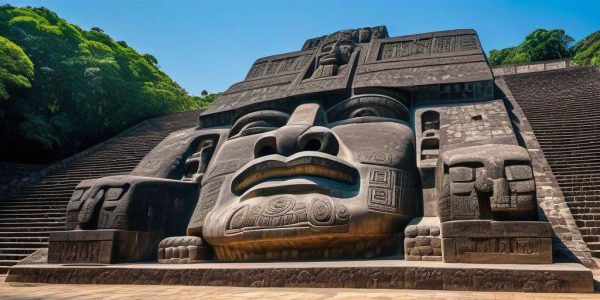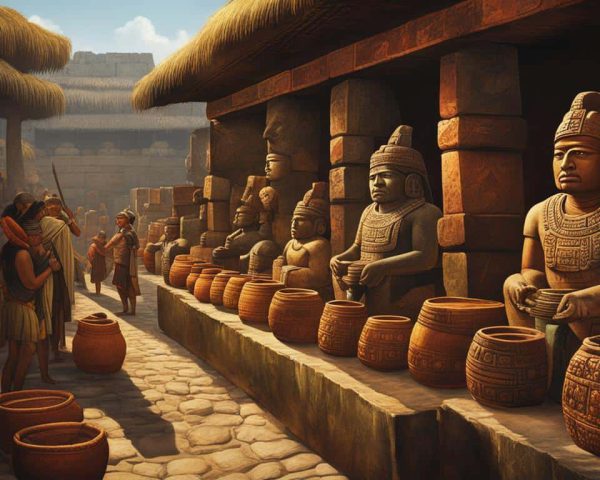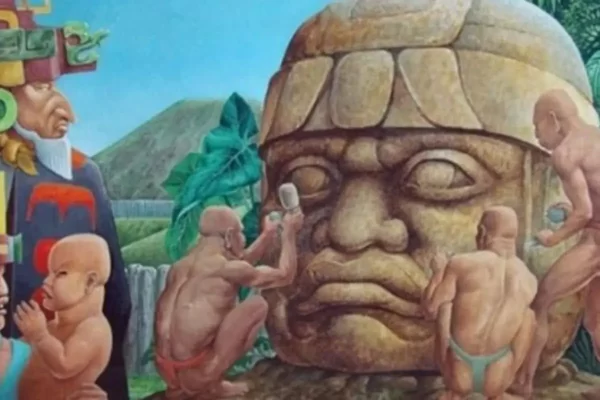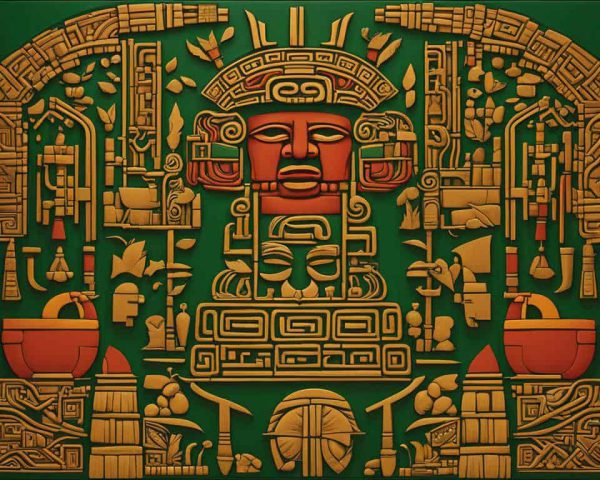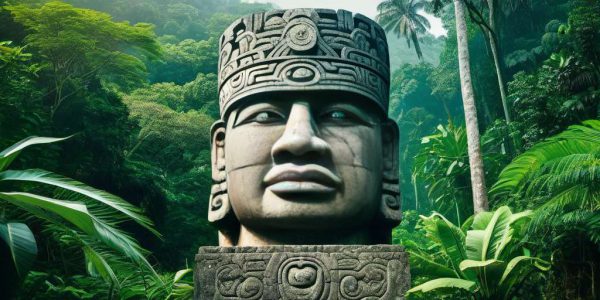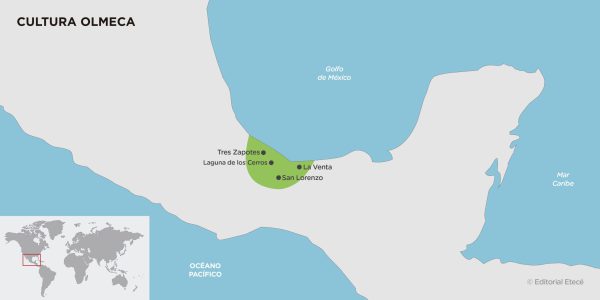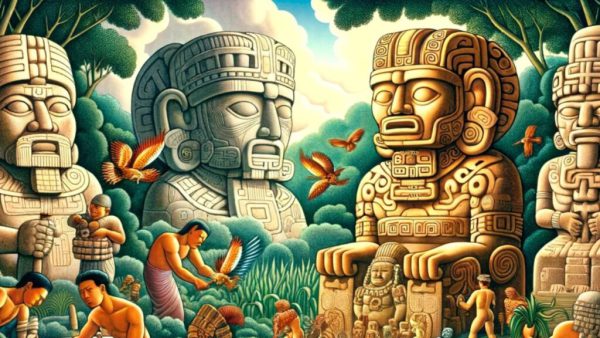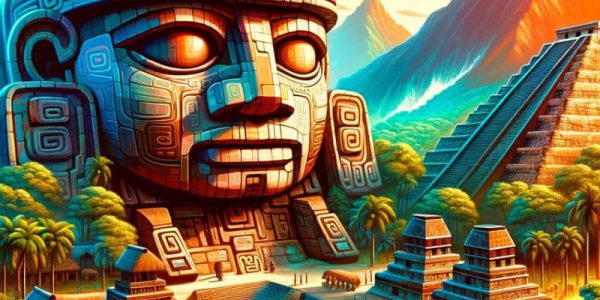Origin of Cocoa: The Olmecs
Until recently, it was thought that the Olmecs had been the first to cultivate the cocoa tree, about 3,000 years ago, but it seems that, as we noted before, it has been confirmed that some Amazonian tribes already used its seed.
Thanks to recent studies, we have also learned that the Olmecs used cocoa as a ceremonial drink, since traces of theobromine have been found in large ceramic vessels with drawings that archaeologists have classified as ceremonial vessels.
Centuries later, the cocoa culture spread to the Mayan civilization (600 B.C.) and the Mexica (1400 B.C.).
The origin of the name “cacao” is attributed to the Olmec civilization, who are believed to have called it “kakawa.”
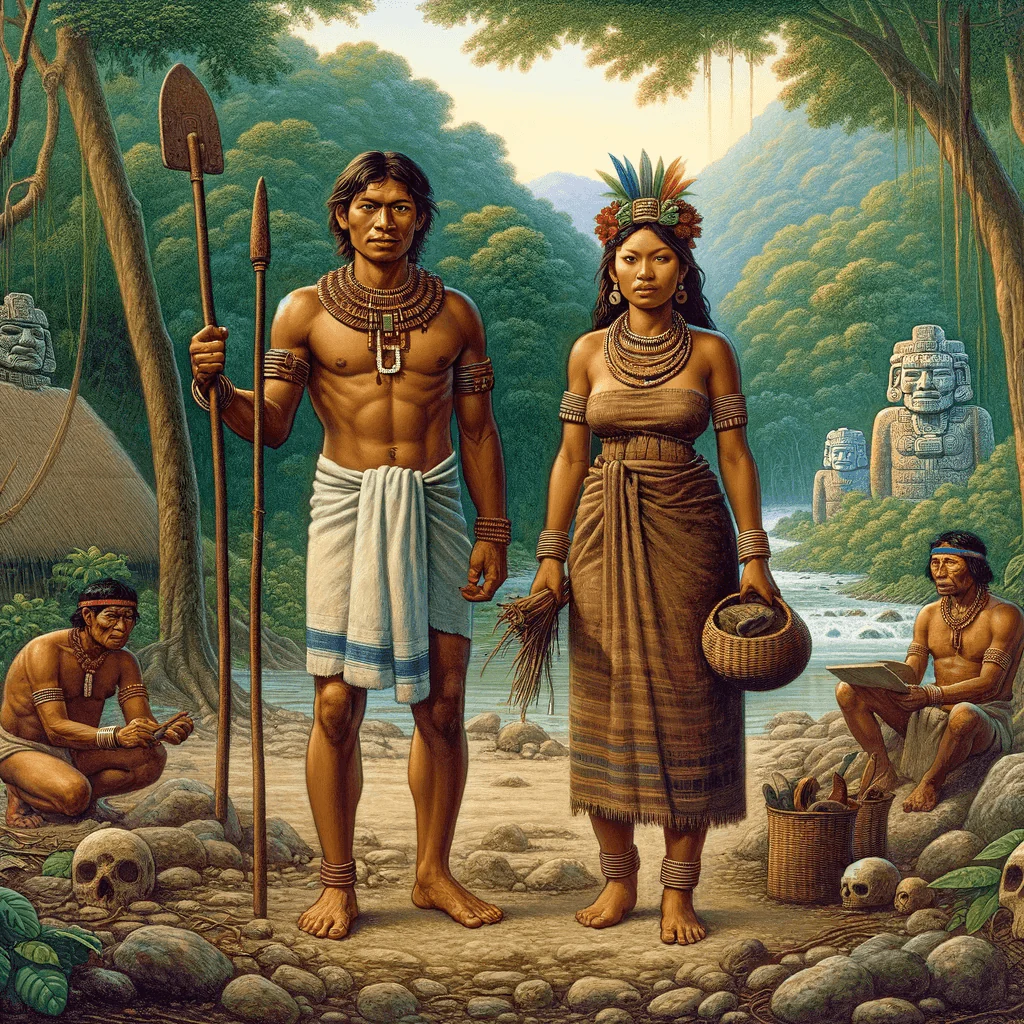
The Olmec culture developed in ancient Mexico, during the Mesoamerican preclassic period (1200 to 400 BC), and is considered the precursor of all Mesoamerican cultures. The most significant thing that this civilization left behind were the colossal heads carved in stone weighing up to 26 tons.
The monumental complexes, their massive stone sculptures, the ball games, the drinking of chocolate and the animal deities were characteristics of the Olmec culture, which directly influenced the rest of the Mesoamerican civilizations that would succeed them.
Its territory was located in the south of the Gulf of Mexico, between the current states of Veracruz and Tabasco. Its influence and commercial activities expanded from 1200 BC, reaching modern-day Nicaragua.
The Olmecs are a mysterious civilization: It is not even known what they called themselves (Olmec is their name in Nahuatl, which means “inhabitants of the rubber region). Their origins, location and extent of their settlements are unknown.
The Olmecs did leave records of their gods and religious practices, using symbols.
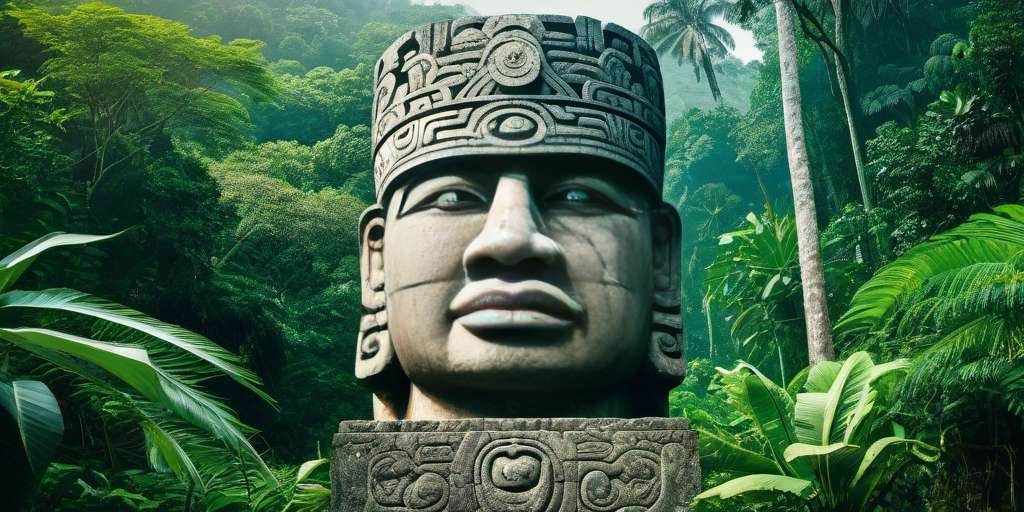
Traces of theobromine in ceramic vessels from San Lorenzo:
Powis et al., (2011) discovered deposits of potsherds and vessels in the archaeological sites of San Lorenzo and Manatí (1800-1000 BC).
Small vessels have been found; some with a white surface, used to serve cocoa drinks, the containers are generally individual in size. Kaolin pottery (white clay) was produced locally and exported to other regions.
Medium vessels were used for serving or offerings. Only specimens with engravings have been found. Two of them present motifs whose meaning is linked to the earth and the sky.
Olmec statuette of the god of cocoa and Olmec vessel with remains of cocoa
According to current hypotheses, in the Middle Preclassic (1200-500 BC), during the so-called Olmec horizon, cocoa drinks reached Oaxaca, central Mexico and other Mesoamerican regions. Images of the cocoa plant have been found in Teotihuacan pottery and wall painting from the Early Classic period (250-600 AD).

